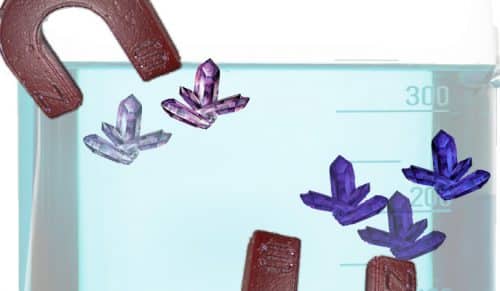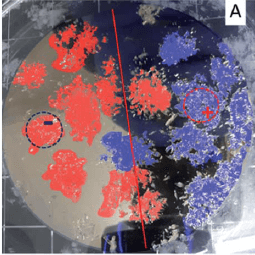Scientists at the Weizmann Institute of Science have developed a method that makes it possible to distinguish between right-handed and left-handed crystals through the use of a magnetic field. The method may be good news for manufacturers of medicines, pesticides and fertilizers

In the middle of the 19th century, Louis Pasteur discovered that there are molecules with directionality - left or right. He separated crystals of these molecules using tweezers and hypothesized that the directionality was created by the influence of the Earth's magnetic field. Although this hypothesis turned out to be incorrect, recently scientists from the Weizmann Institute of Science and the Hebrew University of Jerusalem found an indirect connection between magnetism and the orientation of molecules, and used this connection to separate crystals with different orientations.
Sorting crystals according to their orientation - known as chirality - is an essential step in the production of medicines, pesticides and many other chemical substances. This is because sometimes only molecules with a certain chirality lead to desired results - while those with the opposite chirality may be useless or even harmful. "With the existing methods, the sorting process needs to be adapted to the type of crystal," says Prof. Ron Naaman from the department of chemical and biological physics at the institute. "Our approach, on the other hand, is suitable for any crystal formed from chiral molecules spontaneously, so it may be cheaper and more efficient." The research, led by Prof. Naaman, Prof. Meir Lahav from the Department of Materials and Surfaces of the Institute and Prof. Yossi Platiel from the Hebrew University, was recently published in the scientific journal Chemical Science.
In order to sort the crystals, the scientists used a phenomenon previously discovered by members of Prof. Naaman's group: the CISS effect, an acronym for chirality-induced spin selectivity. It means that when molecules come into contact with a surface, they become polarized (electrically), following the movement of electrons from one side of the molecule to the other. In chiral molecules the electric polarization is accompanied by the polarization of the "spin". This can be described as if the electric charge at the end of the molecule rotates in a certain direction: clockwise or counterclockwise. In previous studies, the scientists showed that with the help of the CISS effect it is possible to sort substances according to their orientations: when they exposed a solution containing right-handed and left-handed molecules to a magnetic surface, it was mainly molecules with a certain chirality that stuck to the surface.

When the scientists inserted a magnetic surface into a solution of right-handed and left-handed chiral molecules (in red and blue), crystals formed of the molecules with opposite magnetic poles
In the new study, the scientists showed that the method can also be applied to crystals. First, the scientists exposed solutions containing chiral molecules to a magnetic surface, and as they had previously shown, only molecules with a certain chirality were attracted to the surface. When the molecules reached a high concentration, they began to crystallize, and thus the scientists obtained crystals containing molecules with a certain orientation - a fact of great importance for future industrial uses. "Our experiment was incredibly simple, but it led to a very efficient crystal sorting," says Prof. Naaman. "It is possible to develop the method for sorting at a high purification level in the industry."
The research group included Dr. Francesco Tessinari, Jacob Steidel and Shahar Pelatiel from the Department of Chemical and Biological Physics of the Weizmann Institute of Science and Prof. Claudio Fontanzi from the University of Modena and Reggio Emilia in Italy.
The method demonstrated in the experiment allows crystals to be sorted according to their chirality with an accuracy of 98%.
for the scientific article
More of the topic in Hayadan:

One response
A very nice article